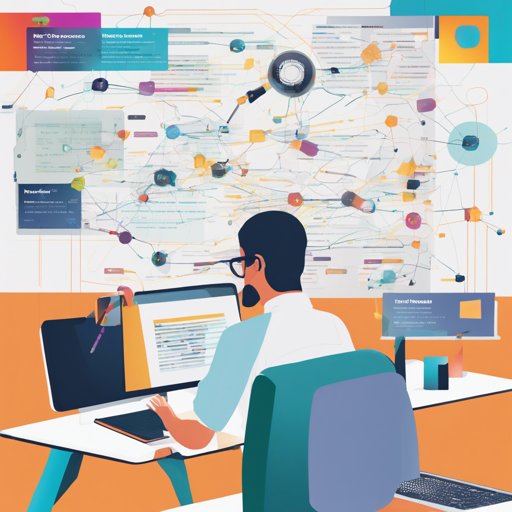Are you ready to dive into the world of Named Entity Recognition (NER) with a fine-tuned model? This guide will walk you through the process of using the ner_nerd_fine model, which has been optimized to perform token classification tasks using the nerd dataset. Let’s break it down in a way that even a novice can understand!
Understanding the Model
The ner_nerd_fine model is a finely-tuned version of bert-base-uncased that excels in recognizing various entities in text based on patterns it learned during training. Think of it as a well-trained barista who can identify your favorite coffee blend just by the fragrance. The model has achieved impressive metrics:
- Accuracy: 0.9050
- Precision: 0.6326
- Recall: 0.6734
- F1 Score: 0.6524
- Loss: 0.3373
This means the model performs quite well in distinguishing between different types of information in your text data.
How to Get Started
Follow these simple steps to start utilizing the ner_nerd_fine model:
- Make sure you have the necessary libraries installed: Transformers, Pytorch, and Datasets.
- Load the model and tokenizer from the Transformers library.
- Prepare your text data to feed into the model.
- Run the model to obtain token classifications.
Sample Code
Here’s how the core code looks:
from transformers import BertTokenizer, BertForTokenClassification
from transformers import pipeline
# Load model and tokenizer
tokenizer = BertTokenizer.from_pretrained('bert-base-uncased')
model = BertForTokenClassification.from_pretrained('ner_nerd_fine')
# Create a pipeline
ner_pipeline = pipeline('ner', model=model, tokenizer=tokenizer)
# Input text
input_text = "Your text goes here."
# Run the model
results = ner_pipeline(input_text)
print(results)Understanding the Code Through an Analogy
Imagine you are a pizza chef. The model is your special pizza oven that has been designed to create the perfect pizza based on years of experimentation.
- Loading the model and tokenizer: Just like you’d preheat your pizza oven to the right temperature, you load the model and tokenizer to prepare them for cooking.
- Creating the pipeline: This is akin to arranging your ingredients—making sure everything is ready to make a delicious pizza.
- Inputting text: Think of this as putting the dough into the oven. The input text is about to be transformed into recognizable entities.
- Running the model: Like your oven baking the pizza, the model processes the text and generates outputs!
Troubleshooting Tips
If you run into issues while using the model, here are some troubleshooting ideas:
- Check your library versions and ensure they are compatible. You may need specific versions of Transformers (4.9.1), Pytorch (1.9.0), and others as listed.
- Verify the input text formatting; it should be a raw string without tokenization.
- If you encounter memory errors, consider reducing the batch size in your input to avoid exceeding your GPU’s memory.
For more insights, updates, or to collaborate on AI development projects, stay connected with fxis.ai.
Conclusion
Once you get the hang of it, using the ner_nerd_fine model will feel like a breeze! At fxis.ai, we believe that such advancements are crucial for the future of AI, as they enable more comprehensive and effective solutions. Our team is continually exploring new methodologies to push the envelope in artificial intelligence, ensuring that our clients benefit from the latest technological innovations.

